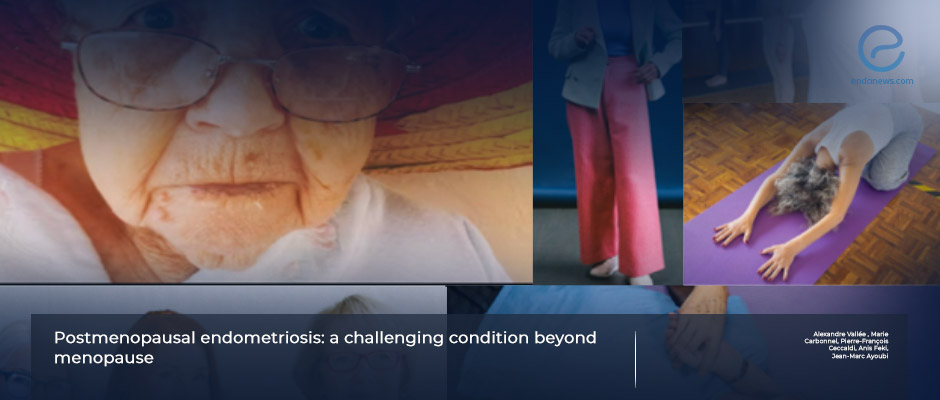A literature review about postmenopausal endometriosis.
Jul 25, 2024
Effective care and providing a good quality of life are the milestones of management.
Key Points
Importance:
- Although endometriosis is generally considered a disease of women of reproductive age, evidence suggests that the disease can persist or even develop in the postmenopausal period.
Highlights:
- Clinicians should suspect postmenopausal endometriosis when the women have pelvic pain, dyspareunia, and urinary/bowel symptoms after their menopause.
- A multidisciplinary approach, appropriate diagnosis, management to alleviate the symptoms, and monitoring the potential complications are essential.
- Physicosocial considerations are helpful, and clinicians should discuss and manage the disease's impact on quality of life, such as sexual health, risk of malignancy, and long-term health risks.
What's done here:
- This review was penned by Vallee et al. to summarize postmenopausal endometriosis as the clinic, diagnosis, management, and impact on women's health.
- The PubMed/Medline, Scopus, and Web of Science databases used for the research from the inception to 2023.
Basic Outlines:
- The clinical features of postmenopausal endometriosis include recurrent pelvic pain, dyspareunia, bowel or urinary symptoms, and sometimes irregular bleeding.
- Diagnosis is difficult due to the absence of menstrual cycles. Symptoms can be confused with other postmenopausal complaints.
- Management compromises surgical approaches, hormonal therapies, pain management, and individual care.
- Postmenopausal endometriosis impacts the quality of life, sexual health, and long-term well-being of the woman.
Lay Summary
Typically, endometriosis disease brings relief to women after menopause, but some individuals continue to develop some endometriosis-related issues even after the cessation of menstruation. This enigmatic condition, called postmenopausal endometriosis, needs to be understood, and the disease must be diagnosed carefully.
A new explanation for the occurrence of postmenopausal endometriosis is related to the dysregulation of aromatase activity due to genetic and epigenetic changes or genetic polymorphism. The absence of menstrual cycles poses diagnostic challenges and requires a unique approach to evaluation and diagnosis. Diagnosing postmenopausal endometriosis sometimes requires a multidisciplinary approach involving gynecologists, radiologists, and even colorectal and urologic specialists.
This review, by Vallée et al. from the Department of Epidemiology and Public Health, Foch Hospital, France, aimed to shed light on the diagnosis, management, and ways to improve the quality of life in women with postmenopausal endometriosis. The authors scanned the English literature database from PubMed, Medline, etc., and penned this paper to solve the mystery and to provide an idea about the diagnosis and management of this disease, and recently published their results in Menopause.
Polygenetic and polyepigenetic theory can explain the occurrence of postmenopausal endometriosis, which could be compatible with the recent histochemical profile of endometriosis. The difficulties with the diagnosis include lack of menstrual bleeding, overlapping the symptoms with other pelvic pathologies, and limitation of imaging techniques. A surgical approach to endometrial lesions can provide symptomatic relief and help confirm the diagnosis. Hormonal therapies such as aromatase inhibitors and depressing estrogen activity would help prevent the growth of endometrial implants. All management procedures should be individual and multidisciplinary. Regular monitoring and follow-up of the patients are also essential.
In recent years, "Stem cell theory" has raised another explanation for the development of postmenopausal endometriosis. This theory suggests the disease may originate from multipotent stem cells present within the pelvic cavity, particularly the peritoneum. Cellular transformation of those stem cells can occur under the influence of hormonal changes or local inflammatory processes.
Although the overall risk is low, the women diagnosed with postmenopausal endometriosis should monitored closely for any transformation to malignancy.
Research Source: https://pubmed.ncbi.nlm.nih.gov/38531006
pelvic pain bowel symptoms urinary symptoms irregular bleeding hysterectomy hormonal treatment management quality of life postmenopausal endometriosis.

